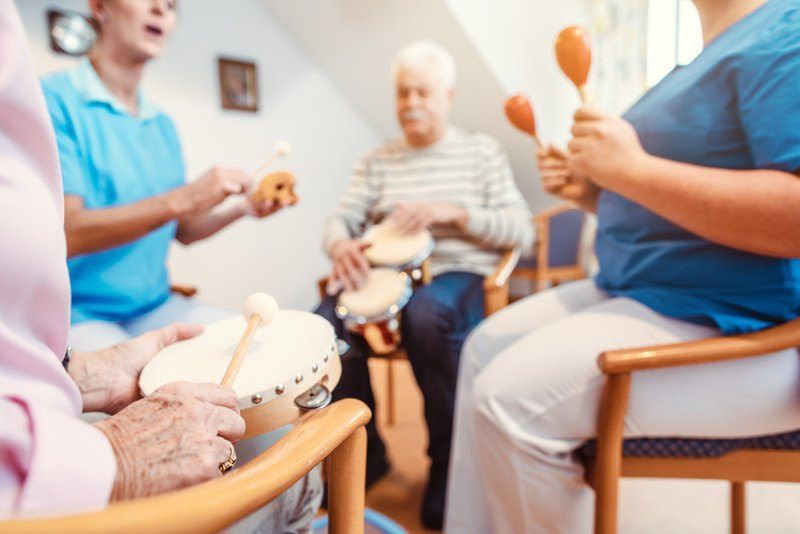BLOG
The Benefits of Group Therapy for Parkinson’s Rehabilitation
How can group therapy enhance the rehabilitation process for Parkinson’s patients? Group therapy offers a multifaceted approach to Parkinson’s care, addressing both physical and cognitive challenges. By participating in structured group activities, patients can experience significant mobility and mental acuity improvements, fostering a supportive environment that promotes overall well-being.
The Science Behind Group Therapy's Impact on Mobility
Research consistently shows that group therapy can significantly enhance the mobility of Parkinson’s patients. Studies indicate that engaging in group-based physical activities, such as tai chi, dance, and resistance training, can improve balance, gait, and overall motor function. These activities not only target the physical symptoms of Parkinson’s but also provide a structured environment where patients can motivate each other.

Specific exercises used in group therapy settings include:
- Tai Chi: Known for its slow, deliberate movements, tai chi helps improve balance and reduce the risk of falls.
- Dance Therapy: Incorporating rhythm and coordination, dance therapy enhances motor skills and provides a fun, engaging way to exercise.
- Resistance Training: This form of exercise utilizes weights or resistance bands and strengthens muscles and improves overall physical endurance.
Furthermore, the social aspect of group therapy encourages consistent participation, which is crucial for long-term benefits. Patients often find that the camaraderie and shared experiences within the group foster a sense of accountability and commitment to their rehabilitation goals.
Cognitive Benefits: Enhancing Mental Acuity through Group Interaction
Group therapy also plays a crucial role in enhancing cognitive function for Parkinson’s patients. Research highlights that cognitive exercises performed in a group setting significantly improve memory, attention, and problem-solving skills. Memory games, puzzles, and group discussions stimulate mental processes and help slow cognitive decline.
Examples of cognitive exercises used in group therapy include:
- Memory Games: Activities like matching cards or recalling lists enhance short-term memory and recall abilities.
- Puzzles: Solving crosswords, Sudoku, or jigsaw puzzles promotes critical thinking and problem-solving skills.
- Group Discussions: Engaging in conversations about various topics encourages verbal communication and social interaction, which are vital for cognitive health.
Emotional and Social Support
Group therapy offers substantial emotional and social benefits for Parkinson’s patients. The shared experiences within a group setting can significantly reduce feelings of isolation, which is a common issue among those living with Parkinson’s. By connecting with others who face similar challenges, patients often find a sense of camaraderie and understanding that is difficult to achieve in individual therapy.
The emotional support provided can lead to improved mental health outcomes. Patients frequently report feeling more optimistic and less anxious after group sessions. The collective environment allows for expressing emotions and concerns, which can be therapeutic.
Social interactions also play a crucial role in enhancing overall well-being. Group activities foster a sense of belonging and community, which can be incredibly uplifting. This social support network not only helps in managing the emotional aspects of Parkinson’s but also encourages patients to stay committed to their rehabilitation programs.
Integrating Group Therapy into Comprehensive Parkinson’s Rehabilitation Programs
Integrating group therapy into a comprehensive Parkinson’s rehabilitation program requires a strategic approach. Healthcare providers should start by assessing their patients' specific needs and capabilities. This initial evaluation helps tailor group activities that effectively address both physical and cognitive challenges.

To implement group therapy, consider the following actionable steps:
- Structured Scheduling: Establish a consistent schedule for group therapy sessions to ensure regular participation and progress tracking.
- Diverse Activities: Incorporate exercises, such as tai chi, dance, and cognitive games, to address Parkinson’s symptoms.
- Qualified Facilitators: Employ trained professionals who can guide the group through specialized exercises and provide necessary support.
- Patient Feedback: Regularly collect participant feedback to adjust the program as needed, ensuring it remains effective and engaging.
Healthcare providers should also foster a supportive environment, encouraging social interaction and emotional sharing. Creating a community within the group can significantly enhance the overall rehabilitation experience. By integrating these elements, group therapy can become a cornerstone of a holistic Parkinson’s care plan, offering comprehensive benefits that extend beyond traditional treatment methods.
The Future of Group Therapy in Parkinson’s Care
Group therapy offers a multifaceted approach to Parkinson’s rehabilitation, addressing physical, cognitive, and emotional needs. Research shows significant improvements in mobility and mental acuity through structured group activities. Integrating group therapy into comprehensive care plans can improve patients' lives holistically. To learn more about personalized care options, visit Assured Senior Living.














